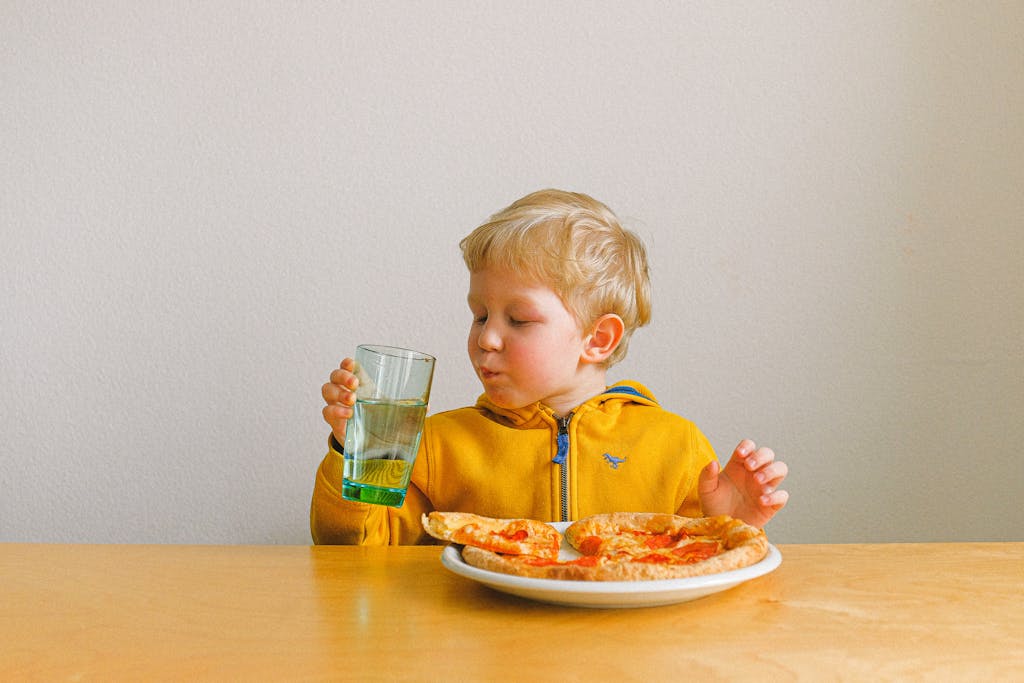Conquer Picky Eaters: 25 Fun & Easy Strategies to Expand Your Child’s Palate Today!
Hey parents! Today I’m coming at you with another parenting adventure. Today, we’re tackling a challenge that’s had me pulling my hair out more times than I’d like to admit: picky eaters. If you’ve ever found yourself staring down a tiny food critic who’s declared war on anything green, you’re in the right place. Let’s chat about some strategies to expand your child’s palate and bring a little more peace to your dinner table.

The Picky Eater Predicament: You’re Not Alone!
Picture this: It’s dinnertime, and you’ve lovingly prepared a nutritious meal. You set the plate in front of your little one, and… cue the wrinkled nose and pushed-away plate. Sound familiar? Trust me, I’ve been there more times than I can count with my own kids.
Picky eating is a common phase in child development, but that doesn’t make it any less frustrating for parents. We worry about nutrition, growth, and whether we’re somehow failing at this whole feeding thing. But here’s the good news: with some patience, creativity, and a few clever strategies, we can help our kids expand their palates and develop healthier eating habits.
In this article, we’ll explore why kids become picky eaters, share some tried-and-true strategies to encourage adventurous eating, and offer practical tips to make mealtimes less stressful. Whether you’re dealing with a toddler who’s suddenly decided that beige is the only acceptable food color or a grade-schooler who treats vegetables like they’re toxic, I’ve got your back. Let’s dive in!

Why So Picky? Understanding the Root of Fussy Eating
Before we jump into solutions, it helps to understand why our little ones might be turning up their noses at new foods. As a mom of three, I’ve learned that picky eating isn’t just about being difficult (though it can certainly feel that way sometimes!).
Recent research in child development suggests that picky eating can stem from various factors:
1. Genetic predisposition: Some kids are naturally more sensitive to certain tastes and textures.
2. Developmental stage: Toddlers often go through a neophobic phase where they’re wary of new foods.
3. Control and independence: Refusing food can be a way for kids to assert themselves.
4. Sensory sensitivities: Some children may have heightened sensory responses to food textures or smells.
Understanding these factors doesn’t magically solve the problem, but it can help us approach it with more empathy and patience. I remember when my oldest, Jake, went through a phase where he would only eat white foods. It drove me crazy until I learned about sensory sensitivities and realized he might be struggling with textures. That knowledge helped me adjust my approach and gradually introduce new foods in a way that worked for him.
Now, let’s explore some strategies to help our picky eaters expand their culinary horizons!

Strategies for Success: Expanding Your Child’s Palate
1. Make Mealtimes Fun and Pressure-Free
One of the biggest game-changers in our house was shifting the focus from “you must eat this” to “let’s enjoy our time together.” Here are some ideas:
Family-style serving: Let kids serve themselves. It gives them a sense of control.
Food art: Turn meals into creative projects. Broccoli trees in mashed potato snow, anyone?
Conversation starters: Use mealtime to chat about your day, tell jokes, or play simple games.
Remember, forcing kids to eat rarely works and can create negative associations with food. Our job is to provide healthy options; it’s up to them to decide what and how much to eat.
2. Involve Kids in Meal Planning and Preparation
Getting kids involved in the kitchen can work wonders for expanding their palates. Here’s how:
Let them choose: Give kids options when meal planning. “Should we have carrots or green beans with dinner?”
Garden together: If possible, grow some vegetables. Kids are more likely to eat what they’ve grown.
Cook together: Even young kids can help with simple tasks like washing vegetables or stirring.
I’ll never forget the day my picky middle child, Emma, devoured a salad she had helped make. The pride on her face was priceless!
3. Be a Role Model
Kids learn by example, so let them see you enjoying a variety of foods. Here’s a little tangent: I used to hide my own food dislikes, but I realized that wasn’t helping. Now, I make a point of trying new foods in front of my kids and talking about the experience. “Wow, this kale chip is crunchier than I expected!” It shows them that it’s okay to be uncertain about new foods but still give them a try.
4. Introduce New Foods Gradually
The key here is patience and persistence. Some tips:
Food chaining: Start with foods your child likes and gradually introduce similar foods.
One new food at a time: Serve new foods alongside familiar favorites.
The “one bite” rule: Encourage kids to try one bite without pressure to finish.
Multiple exposures: It can take up to 15-20 exposures for a child to accept a new food.

Overcoming Challenges: When the Going Gets Tough
Let’s be real: there will be days when nothing seems to work. Here are some strategies for those challenging times:
1. Stay calm: Your anxiety can transfer to your child. Take a deep breath and remember this phase will pass.
2. Offer choices: Instead of “Eat your vegetables,” try “Would you like carrots or broccoli?”
3. Be sneaky (sometimes): While it’s important for kids to learn to enjoy whole foods, there’s no harm in sneaking extra nutrition into favorite dishes. Spinach in smoothies or cauliflower in mac and cheese can be lifesavers.
4. Seek support: If you’re really struggling, don’t hesitate to talk to your pediatrician or a nutritionist.
I remember feeling like a failure when my youngest went through a phase of refusing everything but chicken nuggets. It was hard, but with patience and some creative meal planning, we got through it. You will too!

Simple Solutions & Handy Takeaways for Happier Mealtimes
1. Offer a variety of foods at each meal, including at least one thing you know your child will eat.
2. Make food fun with creative presentations or silly names for dishes.
3. Avoid using food as a reward or punishment.
4. Stick to a regular meal and snack schedule to prevent grazing.
5. Be patient and persistent. Change takes time!
6. Try “food bridges” – gradually introducing new foods that are similar to favorites.
7. Make smoothies together as a fun way to introduce new fruits and veggies.
8. Remember that your child’s appetite and preferences may vary from day to day.

Before you go…make dinner
Parenting a picky eater can be challenging, but remember: you’re not alone, and this phase won’t last forever. By creating a positive eating environment, being patient, and consistently offering a variety of healthy foods, you’re setting the stage for your child to develop a healthy relationship with food.
Remember, every small victory counts. Celebrate when your child tries something new, even if they don’t love it right away. And on the tough days, give yourself grace. You’re doing great, and your efforts will pay off in the long run.
Keep up the great work, parents! Your dedication to your child’s health and well-being is admirable. If you have any strategies that have worked well for your family, please share them in the comments below. We’re all in this together!
xoxo


